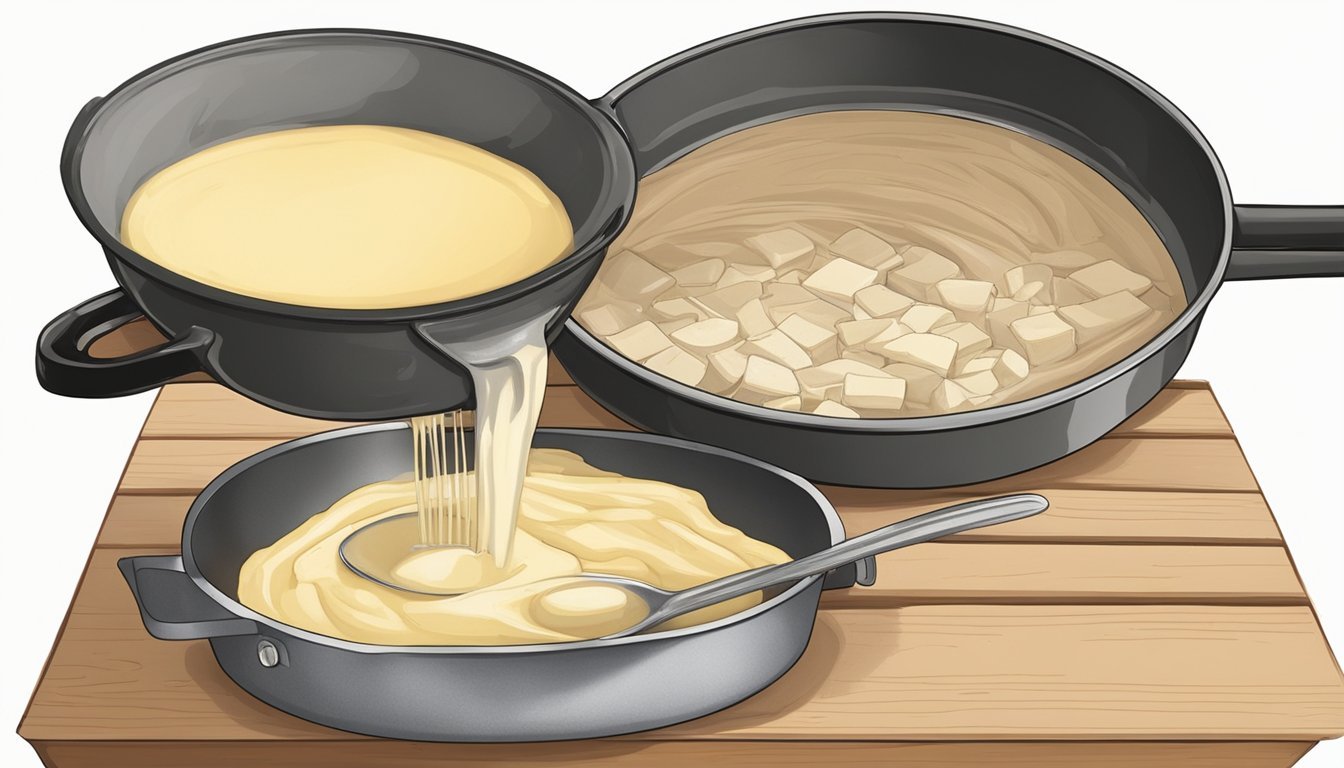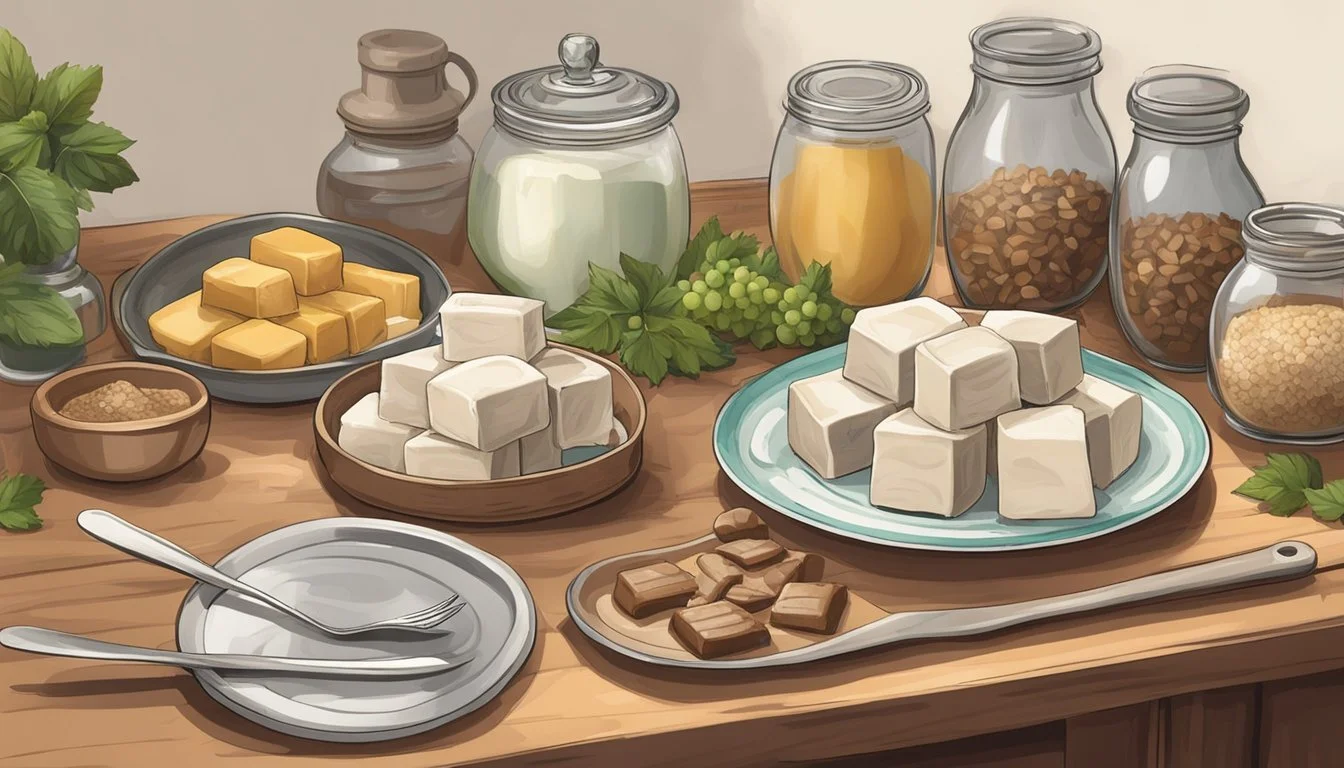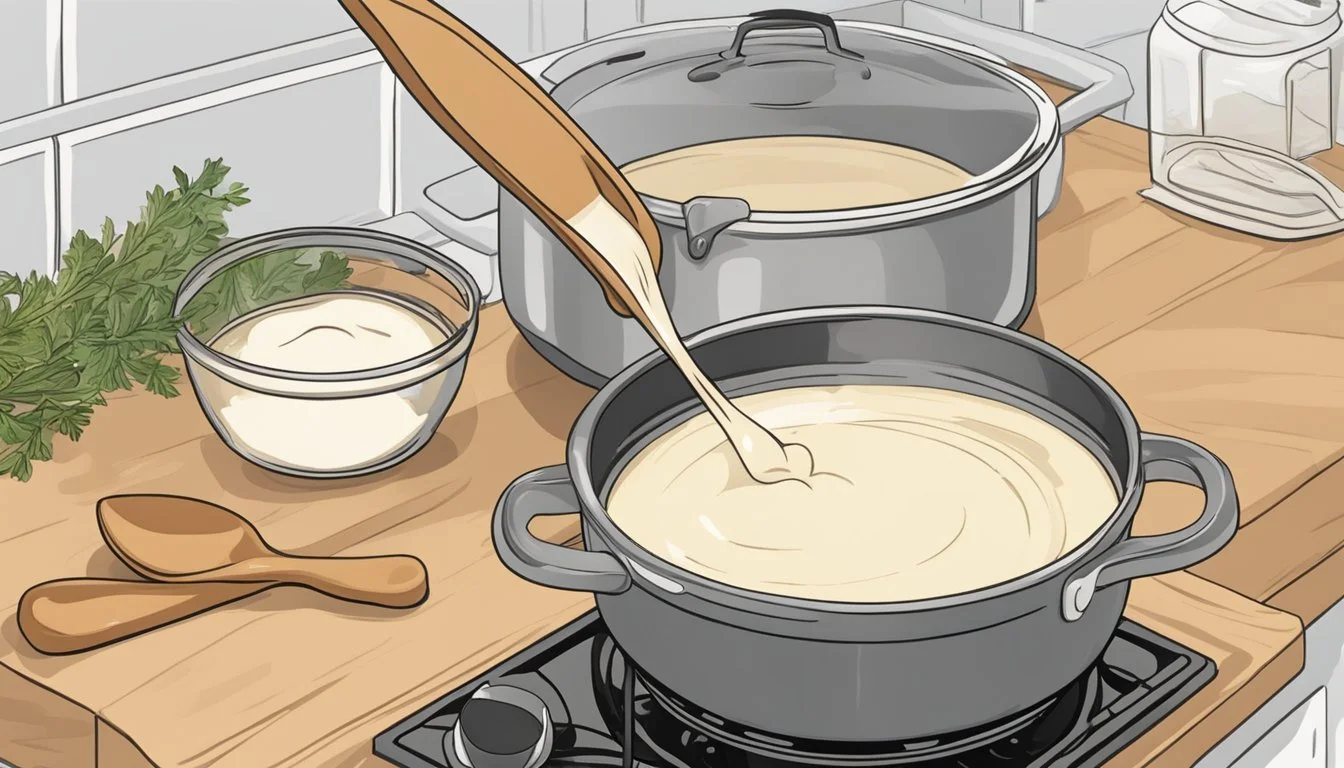How to Make Delicious Goat Milk Fudge for Special Occasions
A Step-by-Step Guide
Goat milk fudge is a creamy and delectable treat perfect for celebrating special occasions or simply satisfying a sweet tooth. Unlike traditional fudge that generally relies on cow's milk, goat milk provides a unique tang and richness that can enhance the complex flavors of fudge. For those who enjoy experimenting in the kitchen or are looking for a twist on classic confections, turning to goat milk as the base for fudge offers an excellent opportunity to create a memorable dessert.
This fudge recipe leans on the inherent qualities of goat milk, which includes a naturally homogenized fat that contributes to a smoother texture in the finished product. Making fudge can be an intricate process, but with the right ingredients and a bit of precision, one can craft a batch of melt-in-your-mouth fudge. Whether it's for a festive gathering, a thoughtful gift, or an indulgent treat, homemade goat milk fudge promises a delightful and sophisticated flavor profile that stands out from its more traditional counterparts.
Selecting Quality Ingredients
When creating goat milk fudge for special occasions, the selection of pristine ingredients is paramount. Elevating the treat from good to great hinges upon the use of premium goat milk, cocoa, and complementary components.
Choosing the Best Goat Milk
For the foundation of the fudge, goat milk should be fresh and of the highest quality possible. One should consider organic goat milk, as it is free from unwanted additives and hormones, ensuring a pure, unadulterated flavor. The milk's freshness is vital, as it directly influences the fudge's texture and taste.
Opting for High-Quality Cocoa
The choice of cocoa is critical for imparting a rich, chocolatey taste to the fudge. One should opt for high-quality cocoa powder that is renowned for its depth of flavor. Organic cocoa is preferred as it is produced under stringent standards, ensuring that the cocoa beans are grown without synthetic fertilizers or pesticides, further elevating the fudge's overall taste profile.
It's important to incorporate cultured butter or normal butter, known for its creaminess and ability to blend smoothly into the fudge mixture. Sugar plays a dual role in both sweetening the fudge and contributing to its structure; hence, a fine granulation is recommended for uniform texture. Vanilla extract, used sparingly, can be a conduit for flavor, magnifying the richness of the cocoa and the tanginess of the goat milk.
Tools and Preparations
Before embarking on the journey of making goat milk fudge, it's crucial to have the right tools and a well-prepared work area. These foundational steps will help ensure a seamless and successful fudge-making experience.
Essential Cooking Tools
For making goat milk fudge, a chef must have certain tools at hand. One of the most important is a candy thermometer, which is crucial for monitoring the fudge mixture to reach the correct temperature during cooking. A sturdy pot is required for consistent heat distribution while stirring the mixture. The act of stirring is facilitated by a long-handled spoon or spatula, which helps to mix ingredients evenly and prevent scorching.
Candy Thermometer: Essential for accuracy.
Pot: Provides even heat distribution.
Spoon or Spatula: Used for effective stirring.
Preparing Your Work Area
When preparing the work area, hygiene and convenience are paramount. Start by laying down parchment paper on a flat surface, which will make removing the fudge easier after it sets. It is also advisable to grease the parchment lightly to ensure that the fudge does not stick. Having all the ingredients measured and close at hand minimizes the need to move around once the cooking process begins, ensuring a smooth flow.
Parchment Paper: For a non-stick surface.
Grease: To prevent sticking and ease removal.
The Fudge Making Process
Creating goat milk fudge requires a careful balance of ingredients and precision in cooking. The result is a decadent and smooth treat perfect for special occasions.
Mixing the Ingredients
The initial step of the fudge making process involves combining the key components: milk, sugar, and cocoa. One must diligently create a well in the center of the dry ingredients and add in the milk and butter without stirring. This careful placement of ingredients ensures that the fudge will have a consistent flavor and texture throughout.
Goat Milk: The star ingredient that provides the fudge with its distinctive creamy taste.
Sugar: Acts as the base of the fudge, contributing to the sweet flavor and structure.
Cocoa: Gives the fudge its rich chocolatey essence.
Cooking to Perfection
The cook must then bring the mixture to the correct temperature to achieve the necessary consistency. While heating the mixture, constant stirring is vital to prevent it from burning and to ensure even cooking. The goal is to reach the "soft ball stage," a critical point at which a dropped sample of the fudge forms a soft ball in cold water, indicating it's ready to remove from heat.
Constant Stirring: Essential for even heat distribution and to achieve a smooth texture.
Soft Ball Stage: A specific temperature range of 234° F to 240° F (112° C to 116° C) to be met for perfect fudge consistency.
Cooling and Setting
After cooking, the fudge needs to cool down to allow the rich and thick consistency to develop. It should be stirred gently as it cools to prevent too much crystallization which can affect the texture. Once it reaches the desired consistency, the fudge is poured into a prepared pan to set. Proper cooling is crucial for the fudge to achieve the right firmness and cut into clean squares before serving.
Gentle Stirring: Helps in achieving a smooth, velvety final product.
Proper Setting: Ensures that the fudge has the correct texture and can hold its shape when sliced.
Adding Variation to Your Fudge
Experimenting with different ingredients can transform simple goat milk fudge into a personalized treat that is perfect for any special occasion. Whether incorporating a variety of nuts or playing with flavors like peanut butter, the possibilities for customization are endless.
Stirring in Nuts and Flavors
To elevate goat milk fudge, consider adding chopped nuts such as walnuts or pecans for a delightful crunch. Vanilla extract is a classic addition that can enhance the creamy flavor profile of your fudge. For an extra layer of taste, ingredients such as orange zest, coconut flakes, or even espresso powder can be stirred in just after the fudge reaches the soft ball stage.
Nuts: Add 3/4 cup of chopped walnuts to the fudge mixture before it cools for a nutty texture.
Flavors: Incorporate 1 tsp of vanilla extract to add depth to the fudge's flavor.
Creating Peanut Butter Goat Milk Fudge
For those who adore the combination of peanuts and chocolate, creating peanut butter goat milk fudge is sure to satisfy. Simply swapping traditional butter for peanut butter in the recipe can give a creamy and rich consistency. The key is to add the peanut butter after the sugar and milk mixture has reached the soft ball stage but is still hot, ensuring it melts and combines smoothly.
Cook sugar, goat milk, and salt together until the soft ball stage.
Remove from heat; stir in peanut butter and vanilla extract until well mixed.
This approach to goat milk fudge allows for a versatile range of flavors tailored to individual preferences or festive themes. Whether one prefers the classic vanilla essence or the indulgent mix of peanut butter, each variation promises a delightful treat.
Final Touches and Presentation
Perfecting the art of presenting goat milk fudge elevates it from a simple treat to an elegant dessert suitable for special occasions. The finishing touches enhance both its appearance and texture, ensuring that every piece is as delightful to look at as it is to taste.
Cutting and Storage
Once the fudge has set to a firm, glossy consistency, it's time to cut it into squares. It's important to use a sharp knife and to cut with a single downward motion rather than sawing back and forth. This approach helps maintain the fudge's smooth texture and prevents it from crumbling. The cut squares should then be stored at room temperature; this helps preserve the fudge's ideal texture. If stored in an airtight container, the fudge can remain fresh for up to two weeks, retaining its creamy consistency and flavor.
Serving Suggestions
When serving goat milk fudge, presentation is key. Arrange the fudge squares neatly on an elegant platter, ensuring each piece is separated slightly from the others to highlight its individuality. For a more festive touch, one can consider adding a small edible garnish, like a mint leaf or a dusting of powdered sugar, to each square. Offering a variety of flavors and spreads, such as chocolate and peanut butter, can appeal to different palates and make the dessert spread more visually appealing. Serving the fudge on a beautiful tray alongside other desserts can truly enhance the overall experience.
Health Considerations
When making goat milk fudge, it's important to consider how the ingredients may affect individuals with dairy sensitivities and the overall benefits that organic ingredients may offer. Choice of ingredients can impact both the flavor and healthfulness of the fudge.
Understanding Dairy Sensitivities
For those with lactose intolerance or dairy allergies, goat milk can sometimes be a more digestible alternative to cow milk. However, one should be aware that goat milk does contain lactose, and individuals with severe dairy allergies or lactose intolerance should still approach goat milk with caution.
The Benefits of Organic Ingredients
Using organic ingredients in goat milk fudge can have several advantages. Organic goat milk is less likely to contain antibiotics, hormones, or steroids—substances often associated with conventional dairy farming. Consuming organic ingredients may reduce exposure to these substances, which some consumers are concerned could affect human health. Moreover, organic nuts and cocoa, often used in fudge recipes, can be free of synthetic pesticides and fertilizers, contributing to a more natural product.
Marketing Your Homemade Fudge
When launching homemade goat milk fudge, the key is to captivate your audience and create a brand experience that resonates. Marketing efforts should emphasize the distinctness of your product and its connection to local culture and ingredients.
Using Social Media
In the realm of social media, platforms like Instagram and Facebook are invaluable for reaching potential customers. Makers should showcase their fudge with high-quality images that highlight the creamy texture and variety of flavors. Using hashtags like #GoatMilkFudge or tagging locations such as Vermont can attract a local audience as well as those with a sweet tooth. Behind-the-scenes stories displaying the use of Alpine goat milk from Sugar Top Farm can add an authentic touch that customers appreciate.
Example Post: Experience the fusion of farm-to-table flavors with our exclusive Vermont Alpine goat milk fudge. Dive into deliciousness and satisfy your sweet tooth with one click!
Branding and Local Ingredients
Effective branding is about storytelling. Establishing a strong brand identity with a focus on local ingredients differentiates your fudge in a saturated market. Utilize packaging that reflects the essence of Sugar Top Farm and the premium quality of Vermont's local products. The use of Alpine goat milk should be a central theme as it speaks to both the quality and uniqueness of the fudge.
Labels Should Include:
Sugar Top Farm's logo
Mention of Vermont artisanal craftsmanship
Highlight Alpine goat milk as a key ingredient
Conclusion
Making goat milk fudge at home is an achievable and enjoyable process. One starts with a simple mixture of sugar and goat milk, which is then brought to the appropriate temperature to achieve the soft ball stage. Ingredients such as dark chocolate or sea salt can be introduced to enrich the flavor profile of the fudge, catering to various palates and special occasions.
Ingredients for customization include:
Dark Chocolate: Adds a rich, decadent dimension.
Sea Salt: Enhances the sweetness and adds a gourmet touch.
The steps involved in the goat milk fudge recipe are straightforward and allow for creative freedom. Those who prefer their sweets with a bit more complexity can easily incorporate high-quality dark chocolate, which pairs beautifully with the creamy texture of goat milk fudge.
For an elegant finishing touch, a sprinkle of sea salt over the surface just before setting can transform the homemade creation into a confectionery masterpiece that rivals professional offerings. The contrast of the salt with the sweet fudge creates a sophisticated flavor combination enjoyed by many.
In essence, goat milk fudge is a versatile treat, making it perfect for holidays, celebrations, or as a unique gift. With careful attention to detail and a bit of patience, anyone can create a delightful batch of fudge that stands out for its creamy consistency and homemade charm.






